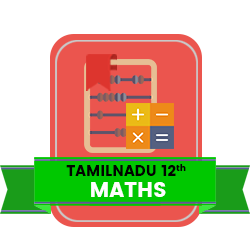6th Standard CBSE Social Science Subjects Question Paper Software Subscription
QB365 covers complete information about 6th Standard CBSE Social Science Subject for 2024-2025 Exam. Question Bank includes 6th Standard CBSE Social Science Subjects Book back, exercise, Updated Question types MCQ, Case Study , Assertion and reason with solution, Previous year asked questions, all possible questions and other key points also. All question with detailed answers are readily available for preparting Maths question papers.
All Chapters Covered

Create Unlimited Question Papers

Access anywhere anytime

Multiple Pattern Question Papers
Share your Question Paper

Font size, line spacing, watermark etc,
Our Other Subjects for 6th Standard CBSE
6th Standard CBSE Social Science Chapters / Lessons
HIS - What, Where, How and When?
HIS - On the Trail of the Earliest People
HIS - From Gathering to Growing Food
HIS - In the Earliest Cities
HIS - What Books and Burials Tell Us
HIS - Kingdoms, Kings and An Early Republic
HIS - New Questions and Ideas
HIS - Ashoka, the Emperor Who Gave Up War
HIS - Vital Villages, Thriving Towns
HIS - Traders, Kings and Pilgrims
HIS - New Empires and Kingdoms
HIS - Building, Paintings and Books
GEO - The Earth in the Solar System
GEO - Globe: Latitudes and Longitudes
GEO - Motions of the Earth
GEO - Maps
GEO - Major Domains of the Earth
GEO - Major Landforms of the Earth
GEO - Our Country India
GEO - India: Climate, Vegetation and Wildlife
CIV - Understanding Diversity
CIV - Diversity and Discrimination
CIV - What is Government?
CIV - Key Elements of a Democratic Government
CIV - Panchayati Raj
CIV - Rural Administration
CIV - Urban Administration
CIV - Rural Livelihoods
CIV - Urban Livelihoods
6th Standard CBSE Social Science Chapters / Lessons Syllabus
An Introduction to History (His. - Our Pasts I)
(a) The time frame under study (b) The geographical framework (c) Sources.
The Earliest Societies (His. - Our Pasts I)
(a) Hunting and gathering as a way of life, its implications. (b) Introduction to stone tools and their use. (c) Case study: the Deccan.
The First Farmers and Herders (His. - Our Pasts I)
(a) Implications of farming and herding. (b) Archaeological evidence for crops, animals, houses, tools, pottery, burials, etc. (c) Case study: the North-West, and North-East.
SOCIAL AND POLITICAL LIFE - DIVERSITY AND INTERDEPENDENCE
UNIT 1: Diversity
Diversity as a fact of being human - What diversity adds to our lives - Diversity in India.
Prejudice and discrimination - Inequality and discrimination - Recognition of multiple identities in oneself - The Constitution and respect for diversity
UNIT 2: Government
The need for government. Decision - making and participation- The quest for universal adult franchise through examples of the sufferagate movement and the antiapartheid struggle - Various forms of government and absence of collective sanction.
Participation and accountability - Resolution of Conflict - Concerns for Equality and Justice.
UNIT 3: Local Government
Panchayati Raj - Description of panchayat including electoral process, decision making, implementation of decisions - Role of a gram sabha - Women and the panchayat
Urban Local Government - Municipal corporation elections, decision making structures - The provision of water and the work of the municipal corporation - Citizens protests to get their grievances addressed
Rural Administration -Focus on a land dispute and show the role of local police and patwari. - On land records and role of patwari.- On the new inheritance law.
UNIT 4: Making a Living
Rural Livelihoods -Various types of livelihoods prevalent in a village.- Different types of farmers: middle farmer, landless labourers and large farmers.
Urban Livelihoods -Difference between primary, secondary and tertiary occupations.- Descriptions of various types of lievelihoods including vegetable vendor, domestic servant, garment worker and bank employee. - Differences between self-employed, regular employment and wage employment. - The interlinkage between rural and urban lives through a discussion of migration.
The First Cities (His. - Our Pasts I)
(a) The settlement pattern of the Harappan civilisation. (b) Unique architectural features. (c) Craft production. (d) The meaning of urbanism. (e) Case study: the North-West.
Different Ways of Life (His. - Our Pasts I)
(a) The Vedas and what they tell us. (b) A contemporary chalcolithic settlement. (c) Case studies: the North-West and the Deccan.
Early States (His. - Our Pasts I)
(a) Janapadas to Mahajanapadas (b) Case study: Bihar, Magadha and the Vajji confederacy.
New Ideas (His. - Our Pasts I)
(a) Upanisads. - (b) Jainism. (c) Buddhism.
The First Empire (His. - Our Pasts I)
(a) The expansion of the empire. (b) Asoka (c) Administration.
GEOGRAPHY - THE EARTH - OUR HABITAT
Planet: Earth in the solar system.
Globe: the model of the earth, latitudes and longitudes; motions of the earth rotation and revolution.
Maps: essential components of maps distance, directions and symbols.
Four realms of the earth: lithosphere, hydrosphere, atmosphere and biosphere: continents and oceans.
Major relief features of the earth
India in the world: physiographic divisions of India – mountains, plateaus and plains; climate; natural vegetation and wild life; need for their conservation.
Life in towns and villages (His. - Our Pasts I)
(a) The second urbanisation. - (b) Agricultural intensification. - (c) Case study: Tamil Nadu.
Contacts with Distant lands (His. - Our Pasts I)
(a) The Sangam texts and long distance exchange. Suggested regions: the Tamil region, extending to south east Asia and the west. (b) Conquerors from distant lands: north western and western India. (c) The spread of Buddhism: north India to Central Asia.
Political Developments (His. - Our Pasts I)
(a) Gupta empire and Harshavardhana. (b) Pallavas and Chalukyas.
Culture and Science (His. - Our Pasts I)
(a) Literature, including the Puranas, the epics, other Sanskrit and Tamil works. (b) Architecture including early monasteries and temples, sculpture, painting (Ajanta); (c) Science.
History - On The Trail of The Earliest People
The earliest people: why were they on the move-How do we know about these people-Choosing a place to live in-Making stone tools-Finding out about fire-A changing environment-Rock paintings and what they tell us-Who did what-A closer look-Hunsgi
History - What, Where, How and When
What can we know about the past-Where did people live-Names of the land-Finding out about the past-One past or many-What do dates mean
History - From Gathering to Growing Food
Varieties of foods-The beginnings of farming and herding-A new way of life-‘ Storing’ animals-Finding out about the first farmers and herders-Towards a settled life-What about other customs and practices-A closer look: Living and dying in Mehrgarh-A closer look: Daojali Hading
History - In The Earliest Cities
The story of Harappa-What was special about these cities-Houses, drains and streets-Life in the city-New crafts in the city-In search of raw materials-Food for people in the cities-A closer look: Harappan towns in Gujarat-The mystery of the end
History - What Books and Burials Tell Us
One of the oldest books in the world-How historians study the Rigveda-Cattle, horses and chariots-Words to describe people-Silent sentinels: the story of the megaliths-Finding out about social differences-Were some burial spots meant for certain families-A special burial at Inamgaon-Occupations at Inamgaon
History - Kingdoms, Kings and an Early Republic
How some men became rulers-Janapadas-Mahajanapadas-Taxes-Changes in agriculture-A closer look: Magadha-A closer look: Vajji
History - New Questions and Ideas
The story of the Buddha-Upanishads-Jainism-The sangha-Monasteries
History - Ashoka, The Emperor Who Gave Up War
A very big kingdom=an empire-How are empires different from kingdoms?-Ruling the empire-Ashoka, a unique ruler-Ashoka’s war in Kalinga-What was Ashoka’s dhamma
History - Vital Villages, Thriving Towns
Iron tools and agriculture-Other steps to increase production: irrigation-Who lived in the villages-Finding out about cities: stories, travellers, sculpture and archaeology-Coins-Cities with many functions-Crafts and crafts persons-A closer look: Arikamedu
History - Traders, Kings and Pilgrims
How to find out about trade and traders-New kingdoms along the coasts-The story of the Silk Route-The spread of Buddhism-The quest of the pilgrims-The beginning of Bhakti
History - New Empires and Kingdoms
Prashastis and what they tell us-Samudragupta’s prashasti-Genealogies-Harshavardhana and the Harshacharita-The Pallavas, Chalukyas and Pulakeshin’s prashasti-How were these kingdoms administered-A new kind of army-Assemblies in the southern kingdoms-Ordinary people in the kingdoms
History - Buildings, Paintings and Books
The iron pillar-Buildings in brick and stone-How were stupas and temples built-Painting-The world of books-Recording and preserving old stories-Stories told by ordinary people-Writing books on science
Geography - The Earth in the Solar System
Introduction-The Solar System
Geography - Globe: Latitudes and Longitudes
Important Parallels of Latitudes-Heat Zones of the Earth-What are Longitudes-Longitude and Time-Why do We Have Standard Time
Geography - Motions of the Earth
Introduction-Motions of the Earth
Geography - Maps
Physical Maps-Political Maps-Thematic Maps-Distance-Direction-Symbols-Sketch-Plan
Geography - Major Domains of the Earth
Lithosphere-Hydrosphere-Atmosphere-Biosphere: The Domain of Life
Geography - Major Landforms of the Earth
Mountains-Plateaus-Plains-Landforms and the People
Geography - Our Country: India
Locational Setting-Political and Administrative Divisions-Physical Divisions
Geography - India: Climate, Vegetation and Wildlife
Cold Weather Season Or Winter-Hot Weather Season Or Summer-South West Monsoon Season Or Rainy Season-Season Of Retreating Monsoons Or Autumn-Natural Vegetation-Tropical Rain Forest-Tropical Deciduous Forests-Thorny Bushes-Mountain Vegetation-Mangrove Forests-Why Are Forests Necessary-Wild Life
Civics - Understanding Diversity
Making Friends-What Does Diversity Add To Our Lives-Diversity In India-How Do We Explain Diversity-Unity In Diversity
Civics - Diversity and Discrimination
Difference and Prejudice-Creating Stereotypes-Inequality and Discrimination-On being discriminated against-Striving for Equality
Civics - What is Government?
Levels of Government-Laws and the Government-Types of Government-Democratic Governments
Civics - Key Elements of a Democratic Government
Participation-Other Ways of Participating-Need To Resolve Conflict-Equality and Justice
Civics - Panchayati Raj
Gram Sabha-The Gram Panchayat-Three Levels of Panchayats
Civics - Rural Administration
A Quarrel in the Village-Area of the Police Station-Maintenance of Land Records-A New Law
Civics - Urban Administration
The Ward Councillor and Administrative Staff-A Community Protest
Civics - Rural Livelihoods
Kalpattu village-Sekar-On being in Debt-Ramalingam and Karuthamma-Agricultural Labourers and Farmers in India-Rural Livelihoods
Civics - Urban Livelihoods
Working on the Street-In the Market-Harpreet and Vandana: Businesspersons-In the Factory: Workshop Area-In the office area
Features in Question Paper Preparation software

(or) type Question

Add or Remover

Sub Questions

Adding Notes

Multiple Pattern

All subjects available
How to Create 6th Standard CBSE Social Science Question Paper


6th Standard CBSE Social Science
- Covers all chapters
- Unique Creative Questions
- Unlimited Question Paper
- Multiple Patterns & Answer keys
0



